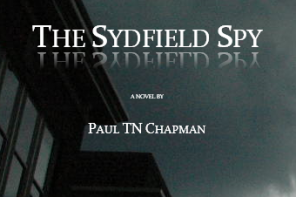Recently a gentleman mentioned that he’d been reading my articles about creativity, and wondered that I’d never mentioned ‘brainstorming’. This, you may know, is a collaborative effort by a group of people to develop a new idea or solve a problem. I’ve always considered creativity to be an individual thing, so it hadn’t occurred to me to mention it.
There are definite benefits to collective thinking. If you get together people who share a common focus and set aside personal considerations, this process can be highly productive. Keeping in mind there’s a difference between creativity and manufacturing a piece of art, a group can help an individual come up with an idea for a poem, or develop a plot for a story, &c. In my recent writing efforts, talking with someone else sometimes has helped me unravel tangles or get around obstacles in my storylines.
Of course, it isn’t limited to creativity of art. I learnt from my Marine friends in my ‘smoky throng of smoking men’ days that in the military, brainstorming is frequent and uninhibited. A group of people, from the highest general to the lowliest grunt, go into a room, close the door, and start a discussion with a view to developing an idea or plan that will solve the problem. Rank doesn’t matter; anyone can contribute an idea or comment on someone else’s. It is understood that you’re free to disagree with another participant, even an officer of higher rank, but without personal criticism or abuse. Once the idea is created and agreed upon, when that door opens, everyone is committed to the plan. (I wish we had had such an arrangement when I worked in Social Service!)
A terrific example of positive brainstorming was provided in the film ‘Dances with Wolves’. During community meetings, a speaker would rise and say, ‘I have heard what So-and-so has said, and his idea has merit. I like that it has the benefit of…. However, I think that….’ or, ‘….and it has given me another idea.’ No one was insulted, this was expected and accepted, and generally with good result. Ideas gave rise to ideas, which is the beauty of brainstorming.
For brainstorming to be effective, it must be done without ego, with an open mind, and a commitment to something greater/other than yourself. (The same is true of Creativity.) If you’re trying to make yourself look good, or if you shoot down every suggestion that comes from a particular person because of personal dislike, you aren’t committed to the process or its outcome. If you have made up your mind before you’ve even started the meeting, there is no point in having a brainstorming session.
Rest assured that everyone in the group knows who contributed what, and if your contributions have virtue, you will be valued and appreciated by all.
It’s odd, isn’t it? Creativity is so often about self-expression, going beyond the limits of the comfort zone and exploring new territory. In business, the aim of creativity usually is to benefit the company, or the client, and benefits to you are secondary. Both kinds of creativity lead to the development of something outside yourself.
And so often, the idea an individual has will be prompted by the input of the immediate community—fellow business people, fellow artists, members of your ‘think tank’. Just as a community of artists will help a fledgling artist grow by believing in him/her, and providing opportunities like art fairs, choir competitions—as a result of which the fledgling grows, the brainstorming community helps develop the idea that one person, or one group, will implement and make succeed.
Brainstorming doesn’t require a large group of people—two people can achieve great things by exchanging and debating ideas. One of my practices is to talk to myself, act out scenes from my books, or read my compositions aloud. This gives me a chance to evaluate the writing, be certain I haven’t used the same word too many times in a paragraph, and experiment with approaches that make the point I want. This does not help me when I hit a snag in the storyline, or wonder if I need to introduce another character. If I were writing only for myself, I would understand what I meant by this, and I wouldn’t be confused by having too many characters—I have the inside track, I know what I mean.
Because I write for others, I need the point of view and perspective of others, and there are a couple of people to whom I can present questions and test plot lines. My clarity can be your confusion, and I would have no way of knowing that without the observations of other people.
There have been groups for collaborative creativity which have become famous. JJR Tolkien, his son Christopher and CS Lewis (to name just few) were members of an Oxford-based group in the 1930s and 1940s called The Inklings. They met frequently, to read to each other from their manuscripts, and get feedback. Similarly, in the US, the Algonquin Round Table in the 1920s was a group of literary wits, actors, and critics who gathered for daily luncheon as a collaborative creativity group—Alexander Wolcott, Harpo Marx, and Dorothy Parker were a few of the better known members.
To paraphrase the Gospels: Where two or three are gathered together, there will be an idea or opinion which just might be useful.
‘Alone we can do so little; together we can do so much’ ― Helen Keller





Good perspectives on the benefits of multiple and spontaneous thought processes.